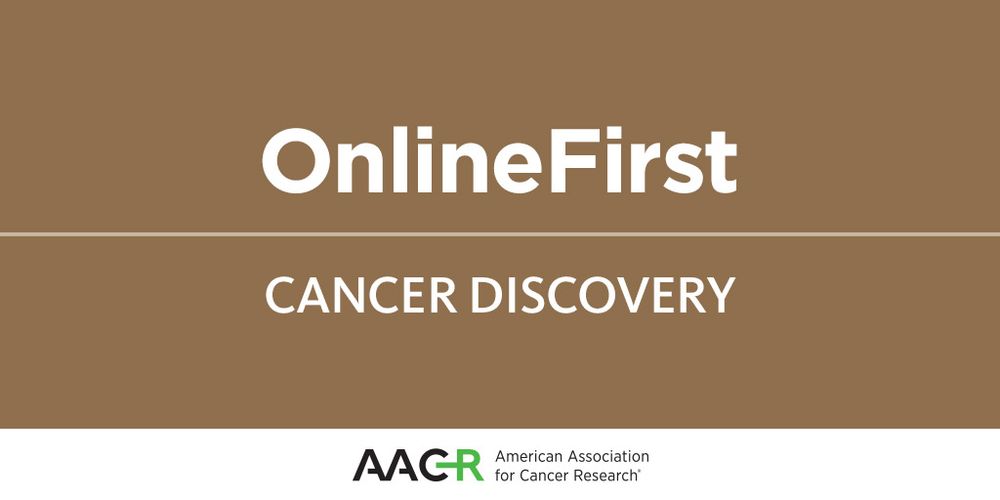[10/10] Three different stories, one shared message: precision covalent chemistry can unlock new therapeutic opportunities. Congratulations and thanks to all collaborators and co-authors. Stay tuned for our future work at @hms-bcmp.bsky.social 💥
10.07.2025 14:13 — 👍 0 🔁 0 💬 0 📌 0

[9/10] Tianfang used modeling and synthesis to design G13Ci-22, a register-shifted acrylamide optimized for geometry & reactivity. G13Ci-22 targets both on- and off-state K-Ras(G13C) and locks the super exchanger mutant at a signaling-incompetent state.
10.07.2025 14:13 — 👍 0 🔁 0 💬 1 📌 0

Distal Covalent Targeting Suppresses Signaling of Oncogenic K-Ras(G13C) in Cancer Cells
Oncogenic mutations of Ras are among the most common genetic alterations in human cancer, with an estimated disease burden of >3 million new patients per year worldwide. Despite widespread appreciation of the importance of Ras in cancer, direct binding ligands, which block downstream signaling, were not reported until 2013 due to the lack of obvious drug binding pockets in the protein. The clinically approved K-Ras inhibitors are mutant-selective as they rely on covalent recognition of the highly nucleophilic somatic cysteine residue of K-Ras(G12C). Recent preclinical reports of noncovalent K-Ras binding inhibitors have emerged, which lack mutant specificity and exhibit varying degrees of biochemical preference for mutant K-Ras over the wild-type. An adjacent glycine-13 mutation, p. G13C, particularly abundant in lung, colorectal, and pancreatic cancer, has not been targeted with an approved therapeutic molecule. Here, we report a series of targeted electrophiles designed to covalently modify Cys13 in K-Ras(G13C), overcoming the structural challenge posed by its shifted position relative to Cys12 in K-Ras(G12C). These inhibitors effectively alkylate K-Ras(G13C) in both GDP- and GTP-bound states, block effector interactions, and suppress the growth of K-Ras(G13C)-mutation cancer cell lines. Our findings expand the landscape of covalent K-Ras inhibitors beyond G12 mutations, providing a new therapeutic strategy for K-Ras(G13C)-driven cancers.
[8/10] In our third paper, I teamed up with then-summer intern in the Shokat Lab (now my talented grad student) Tianfang Shen. We set out to target the overlooked K-Ras(G13C) mutant—just one residue away from G12, but >3,000 new US tumors each year. pubs.acs.org/doi/10.1021/...
10.07.2025 14:12 — 👍 0 🔁 0 💬 1 📌 0

[7/10] We showed that a classic esterification can be repurposed to selectively label the oncogenic Asp12 in K-Ras(G12D). Diazo-G12Di-1, a Switch-II Pocket ligand inspired by natural product azaserine, potently and selectively inhibited proliferation of G12D-mutant cancer cells.
10.07.2025 14:12 — 👍 0 🔁 0 💬 1 📌 0

[5/10] The observed covalent efficiency stems not just from proximity—but precise pre-reactive geometry, which was not foreseen during design. The β-lactone warhead showed a steep SAR: subtle changes dramatically altered reactivity. Balancing reactivity & metabolic stability remains a challenge.
10.07.2025 14:11 — 👍 0 🔁 0 💬 1 📌 0

[3/10] These compounds opened new opportunities and also raised new questions:
1. Why did β-lactones work, and what are their limits?
2. What’s alternative chemistry for targeting Asp12?
3. Can we go beyond G12 to other hotspot mutants?
Here’s what we found👇
10.07.2025 14:11 — 👍 0 🔁 0 💬 1 📌 0

🧵[1/10] A busy week for K-Ras! We reported three stories on covalent, mutant-selective targeting of oncogenic K-Ras mutations @pubs.acs.org. Covalent chemistry has been key in drugging this once “undruggable” GTPase. Sotorasib and adagrasib are the only approved therapeutics for K-Ras(G12C).
10.07.2025 14:10 — 👍 3 🔁 0 💬 1 📌 0

Now online in Cancer Discovery: Restoration of the Tumor Suppressor Function of Y220C-Mutant #p53 by Rezatapopt, a Small Molecule Reactivator - by @PuzioKuter, Lizhong Xu, Masha Poyurovsky, and colleagues doi.org/10.1158/2159...
14.02.2025 16:54 — 👍 7 🔁 4 💬 0 📌 0
Amazing story! Do you know the pdb code of the disaccharide bound lysozyme?
24.11.2024 23:38 — 👍 0 🔁 0 💬 0 📌 0
Chemist | PI of the Tsukiji Lab at Nagoya Institute of Technology | Pursuing new molecular concepts and tools for chemical biology, cell biology, and synthetic biology
http://tsukijilab.web.nitech.ac.jp/index-e.html
Department of Biological Chemistry and Molecular Pharmacology at HMS. Dedicated to elucidating and visualizing molecular mechanisms in biology and medicine.
Assistant Professor at UF-Scripps and the College of Pharmacy, UF
Chemical proteomics, chemical biology, ligand discovery
Science of Synthesis editor at Thieme. Chemist. Runner, supporter of The Posh, and a bit of darts. Dad of two at the Ostsee coast.
Postdoc @UW-Madison Weeks Lab | Ph.D. @Umich Narayan Lab
PhD candidate in Arnold lab at Caltech | Exploring enzymes
Research, news, and commentary from Nature, the international science journal. For daily science news, get Nature Briefing: https://go.nature.com/get-Nature-Briefing
Penn Integrates Knowledge Professor, Natural Product Aficionado, Photopharmacologist, Fox Terrierist, Book Lover, and Unfulfilled Architect. #firstgen
Chemistry PhD candidate & NSF Fellow, Woo Lab, Harvard.
UC Berkeley Nomura and Keasling Lab alum.
Chemical biology, medicinal chemistry, targeted protein degradation.
Assistant Professor, Stanford University Dept. of Chemistry and Sarafan ChEM-H | Chemical biology, synthetic biology | Small molecules, large molecules, biological mechanisms
Chemical biology enthusiast
NCI K99/R00, Schmidt Science Fellow w/Alice Ting
PhD w/ Kevan Shokat
Professor at Scripps Research. Interested in glycosylation, cancer immunology, and autoimmunity.
Assistant Professor at Caltech | Chemical Biologist
morsteinlab.caltech.edu
Science writer and senior correspondent at C&EN. Opinions here are mine and mine alone (she/her).
Signal: bethanyhalford.29
Chemical Biologist with passion for Cancer Research, Targeted Protein Degradation & Transcription.Scientific Founder of Proxygen & Solgate. Pats Fan. Dad.
winter-lab.com
Professor of Chemical Biology and Molecular Therapeutics at UC Berkeley









